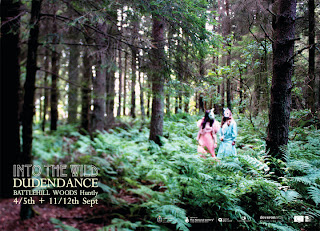The connection to Brasil started in 1992 when Dudendance were invited for a residency at the Imperial Palace in Rio. This led onto an invite from the International Festival of Theatre in Campinas to ran a large scale workshop at the university where Lume are based for the performance faculty of UNICAMP. Out of the workshop the company created a site-specific piece “Sphinx Hinter Gittern” which subsequently toured to festivals and was supported by the PT (workers party) to bring culture into shanty towns. The extended tour, which ran for two years, included a cast of four members of Dudendance and eighteen university students.
The experience in Brasil was life-changing and has had a strong influence on the way Dudendance have worked in the rural town of Huntly over the past ten years. Subsequent visits to Brasil have included the production of two short dance films and workshops and residencies at the Centro Coreografico in Rio. Dudendance have established a network of dancers and performers with whom they collaborate on a regular basis.











